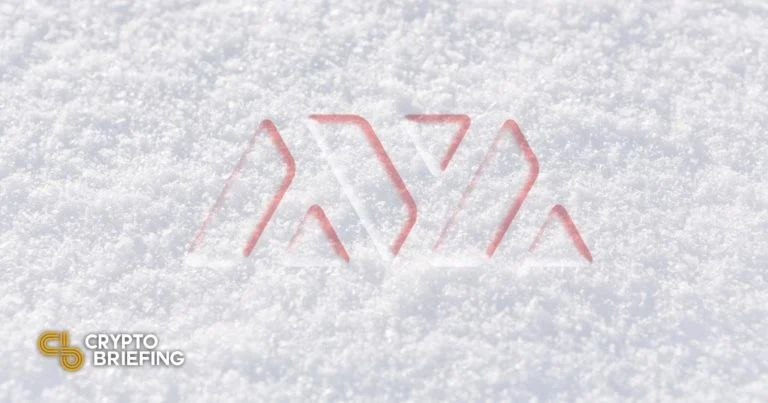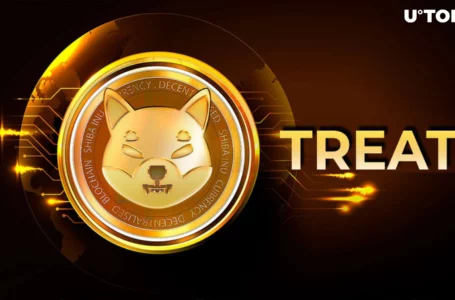
Key Takeaways
- Avalanche is a Layer 1 blockchain that achieves high throughput and offers compatibility with the Ethereum Virtual Machine.
- Community exercise has soared in current months, notably within the DeFi house.
- Avalanche’s EVM compatibility lets developers seamlessly port decentralized applications over from Ethereum.
As crypto heads in direction of a multi-chain future, Avalanche is gaining a big quantity of traction.
Avalanche Explained
Avalanche is a fast-growing Layer 1 Proof-of-Stake blockchain and smart contracts platform.
One in all its most promising worth propositions is providing low-latency block instances of about one second. With high performance and full compatibility with the Ethereum Virtual Machine (EVM), Avalanche provides one of the best user experiences of any Layer 1 blockchains.
As a scalable blockchain, Avalanche can obtain excessive throughput of 4,500 transactions per second whereas preserving enough decentralization. Today, the network has the highest number of validators securing the network of any Proof-of-Stake protocol.
The Avalanche community is predicated on the Byzantine fault tolerance protocol first proposed in a 2018 analysis paper launched by a pseudonymous group known as Crew Rocket. Later, Cornell University professor Emin Gün Sirer and other researchers improved and formalized the protocol. Quickly after, Sirer started engaged on a sensible contracts platform based mostly on the consensus protocol. It was known as Avalanche. After two years of technical development, Avalanche launched on mainnet in September 2020.
Lots of as we speak’s decentralized networks are constructed on outdated consensus protocols which will face scaling points. In many blockchain networks, block consensus is achieved with voting from nodes, but such consensus systems may struggle with scaling as the number of nodes increases.
As compared, Avalanche establishes consensus with random node sampling. The unique consensus system, coupled with a variety of cryptographic techniques, ensures that all of the actors in the network are on the same page.
Technical Structure
Avalanche is at the moment the one blockchain that accommodates greater than a single blockchain with its personal consensus. This design differs from other networks that use a virtual machine and a blockchain.
In its present kind, the Avalanche community consists of three built-in blockchains validated by a typical set of validators: the Exchange Chain (X-Chain) for creating and exchanging assets, the Platform Chain (P-Chain) for creating subnets, and the Contract Chain (C-Chain) for EVM contract execution.
The majority of the exercise occurs within the EVM-compatible C-Chain. It enjoys finality of one to two seconds, which has helped it achieve rapid growth in the DeFi space.
Centered on scalability and ease of use, Avalanche offers the instruments wanted to create personalized blockchains known as subnets or subnetworks. A subnet is an independent blockchain on the Avalanche network run by its own set of validators.
As it’s totally suitable with Ethereum belongings and instruments, Avalanche can cater to numerous wants from the prevailing crypto developer ecosystem. Avalanche’s compatibility with the EVM lets developers seamlessly port their decentralized applications over from Ethereum.
The community is suitable with MetaMask, the popular Web3 pockets for Ethereum customers. This means that DeFi users interacting with Avalanche have a similar experience to using Ethereum. By the Avalanche Bridge, customers can simply port their belongings to Avalanche and benefit from the community’s low cost charges.
The Launch of Avalanche Rush
In recent weeks, Avalanche has gained momentum in the DeFi space, like Solana and Polygon did before it through the first half of the year. In keeping with information from DeFi Llama, the blockchain at the moment comprises $2.91 billion in complete worth locked.
Although Avalanche has been live on mainnet for only a year, it already hosts an ecosystem of automated market makers (AMMs) and borrowing and lending protocols. It additionally helps varied infrastructure tasks consisting of wallets, oracles, storage and computing, and information analytics instruments.
Like many of its Layer 1 competitors, Avalanche Foundation has leveraged the AVAX token to incentivize the onboarding of new users onto the network. On Aug. 18, Avalanche launched a $180 million liquidity mining program known as Avalanche Rush. Since the announcement, over $1.5 billion has been bridged from Ethereum, the network’s total value rocket has surged, and AVAX has jumped by over 200% in price.
This system introduced integrations of Aave and Curve, two of essentially the most extensively used Ethereum-native DeFi purposes. To incentivize usage, rewards are distributed in the native AVAX token. This system motivated hundreds of crypto customers to maneuver their belongings onto Avalanche by way of the community’s bridge.
The DeFi Ecosystem
Since Avalanche Rush launched, the Ethereum blue chips Aave, Curve, and SushiSwap have grown their presence on the network. Nonetheless, it’s the Avalanche-native tasks comparable to BENQI, Pangolin, and Dealer Joe which have led the ecosystem’s development. The vast array of DeFi protocols has presented many yield farming and arbitrage opportunities with high capital efficiency.
Pangolin, a Uniswap clone, is the highest decentralized alternate with the deepest liquidity on Avalanche. Similar to Uniswap, the platform allows users to swap between tokens. It comprises $376.8 million in complete worth locked, whereas its weekly buying and selling quantity averages virtually $1 billion.
Trader Joe is another automated market maker for swapping tokens that has emerged in the last few months. Dealer Joe already comprises $729.6 million in complete worth locked, which is greater than that of Pangolin. The platform lets liquidity providers earn governance tokens called JOE, and token holders can also earn protocol fees by staking JOE.
The dominant challenge within the Avalanche ecosystem as we speak is BENQI, a decentralized lending market that’s attracted $1.3 billion in complete worth locked since launching in August. The Avalanche Foundation launched a $3 million liquidity mining initiative with BENQI, with the project’s QI tokens and AVAX distributed to liquidity miners.
The community additionally hosts a number of yield aggregators much like the likes of Yearn.Finance. The most popular aggregators are Yield Yak and SnowBall, which help liquidity providers automatically deploy their capital to optimiza the yield they earn on their holdings.
Moreover, many NFT tasks and marketplaces are anticipated to launch on the community because the house experiences fast development. One of the most popular Avalanche-based NFT projects today is Avax Apes, a collection of 10,000 randomly generated Apes living on the blockchain.
The Future for Avalanche
In 2021, Ethereum’s widely-documented scalability points have pushed many DeFi customers to discover new blockchain ecosystems. Avalanche has benefited from a growing community of users and has spawned a promising DeFi ecosystem.
To spice up liquidity within the community’s growing DeFi ecosystem, the Avalanche Basis introduced a $230 million fundraise co-led by Three Arrows Capital and Polychain Capital this week. AVAX rallied to a new all-time high following the announcement.
As crypto, DeFi, and NFTs proceed to draw extra customers, Avalanche is well-positioned to flourish. By offering compatibility with Ethereum, high-speed transactions, and a variety of popular DeFi applications, Avalanche is on the path to becoming one of the space’s top Layer 1 networks.


















